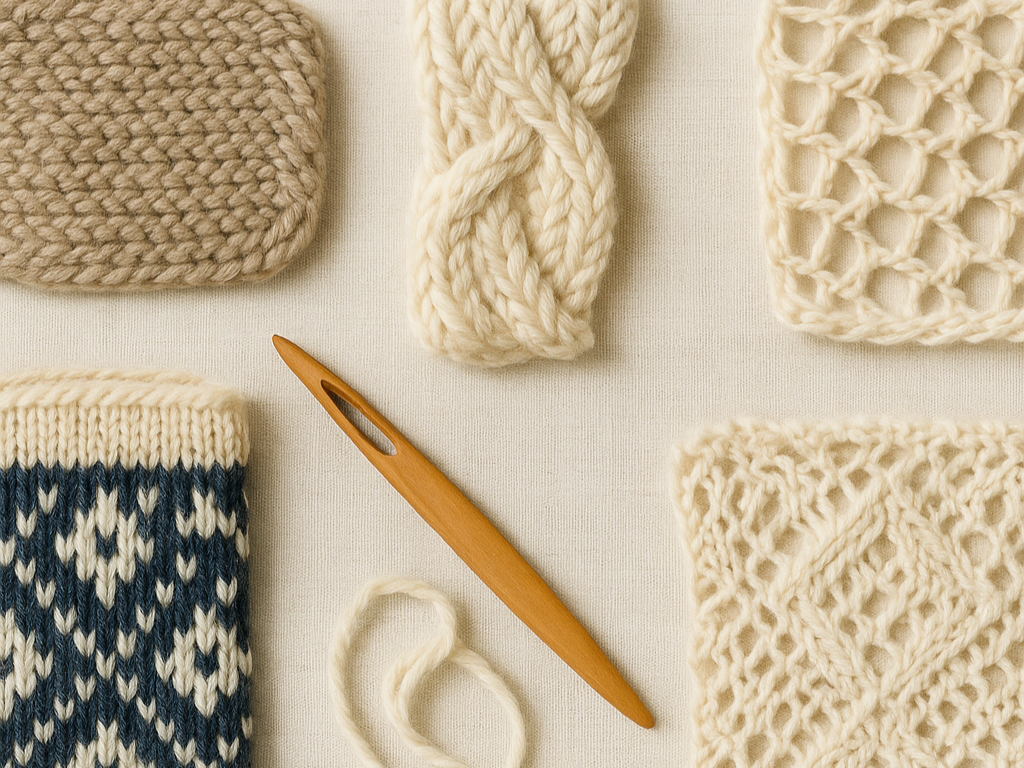#HistoryStitch: Ancient Knitting Techniques – What We Can Still Learn from the Past

Long before circular needles or online tutorials, cultures across the globe developed fascinating textile techniques that balanced function, warmth, and beauty. Some have been nearly forgotten, others are making a quiet return – but all of them still have something to teach us.
Here are five historical knitting-related techniques that continue to inspire modern crafters.
🪡 1. Nålebinding – The Predecessor of Knitting & Crochet
Origin: Documented in Viking-age Scandinavia and ancient Egypt
-
Method: Uses a short, flat needle and short lengths of yarn
-
Result: Dense, durable, and non-unraveling fabric
-
Perfect for: Mittens, hats, and outdoor accessories
✅ If you're interested in slow crafting or historical handwork, this one is a must. A step-by-step tutorial is already in the works!
🧵 2. Twined Knitting (Uvatstrikking / Two-end Knitting)
Origin: Scandinavia, especially Norway and Sweden
-
Method: Two yarn strands are continuously twisted around each other
-
Effect: Highly elastic, thick, and weather-resistant
-
Known for: Traditional patterns like Selbu stars
✅ It takes time, but the result is incredibly warm and durable – ideal for winter wear.
🪢 3. Sprang – Ancient Interlacing Instead of Stitching
Technique: Works with a stretched warp, no loops or stitches
-
Mechanism: Threads are twisted or crossed to form fabric
-
History: Found in prehistoric South America and the Mediterranean
-
Result: Lightweight, net-like, and stretchy – similar to fishing nets
✅ Great for accessories like bags, belts, scarves, or experimental design work.
🧶 4. Lace Knitting – Orenburg & Shetland
Origin: Shetland Islands (Scotland) & Orenburg (Russia)
-
Features: Fine lace yarns, numerous yarn overs, intricate stitchwork
-
Goal: Delicate, openwork shawls – large in size, light in weight
✅ These pieces are masterpieces of skill and tradition – and true heirloom items.
✂️ 5. Steeking – Yes, You Can Cut Your Knitting
Origin: Traditional Fair Isle knitting (Scotland)
-
Method: Garments are knitted in the round, then cut open (e.g. for sleeves)
-
Benefit: Continuous colorwork with no breaks
-
Use: Cardigans, armholes, neck openings
✅ It sounds wild, but it works beautifully – and gives colorwork a clean, professional finish.
💡 Final Thoughts: Let the Past Guide the Present
These techniques prove that textile heritage is rich, inventive, and rooted in function. Reconnecting with these slow, mindful crafts is not just nostalgic – it's deeply satisfying and creatively liberating.
Which of these old-school methods fascinates you the most?
Have you tried any? Tell me with #strickenimtrend or join the discussion in our Facebook group!
#strickenimtrend #ancientknitting #naalbinding #twinedknitting #sprangcraft #laceknitting #steeking #slowcrafting #HistoryStitch
Let's do it!
Yours,
Kathrin ☀️🧶
Want to dive deeper into the world of stitches?
Explore my patterns, browse the blog, or join our community!
